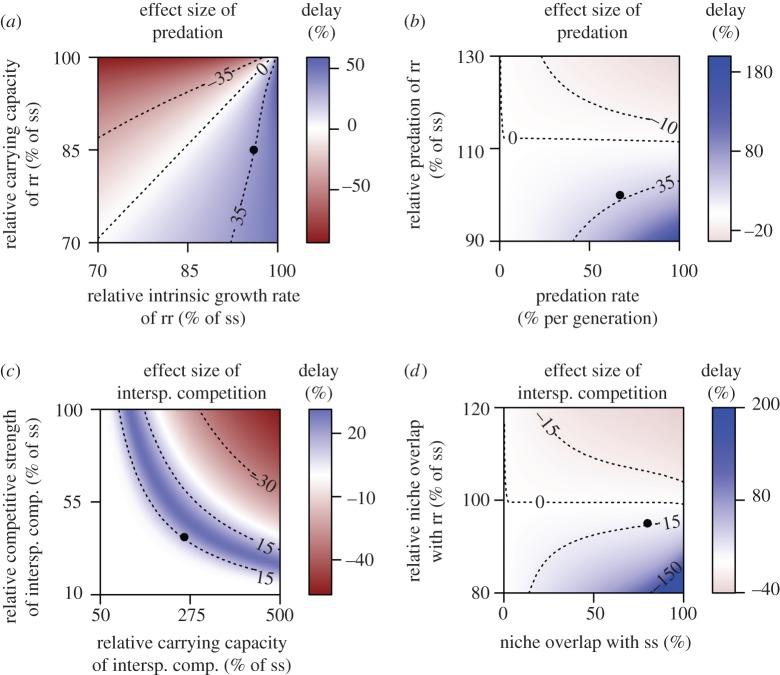Figure 4.
Sensitivity analysis of the simulation model. The effect sizes of predation and interspecific competition on microevolution were measured in % additional time until the genotype frequency of the susceptible wild-type reached 0.99 under non-toxic conditions. Negative effect sizes represent an acceleration of microevolution. The parameters given on the axes were varied whereas all other parameter values were held constant. The black dots indicate the parameter values that represent our experimental conditions and were used in figure 3a,b. (a) The delay through predation increases with the ratio of the fitness costs on the intrinsic growth rate and the carrying capacity and (b) increases with the predation rate, but decreases with the preference of a predator for individuals carrying the resistance allele. (c) The delay through interspecific competition is the largest at an intermediate carrying capacity and competitive strength of the competing species. (d) The delay through interspecific competition increases with the degree of niche overlap and the imbalance of niche overlap between wild-type individuals and pesticide-resistant individuals.

